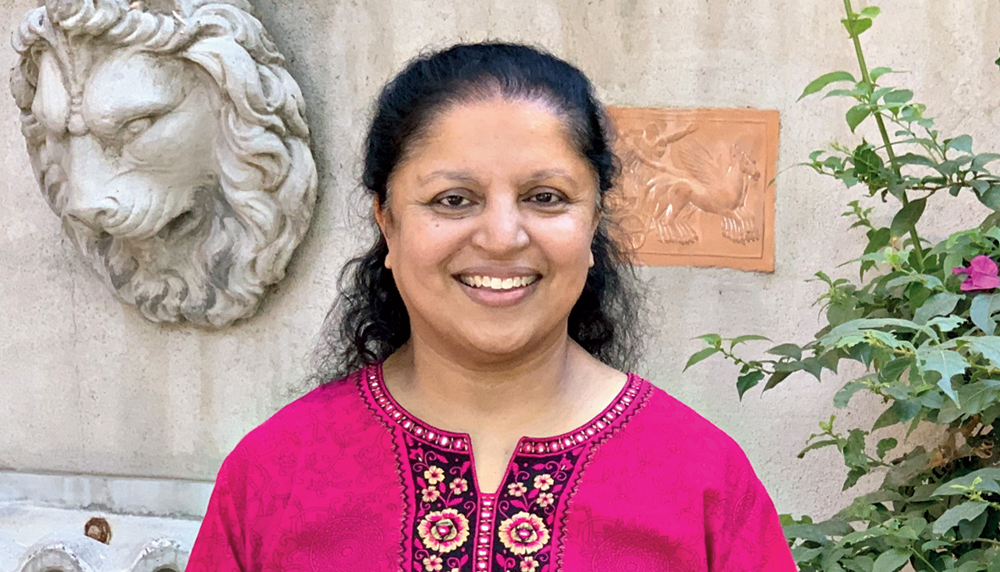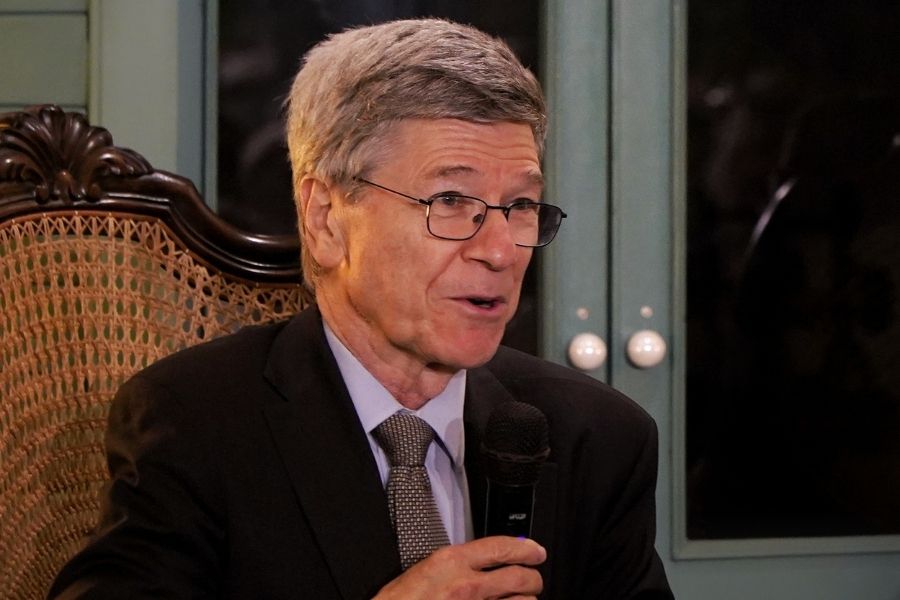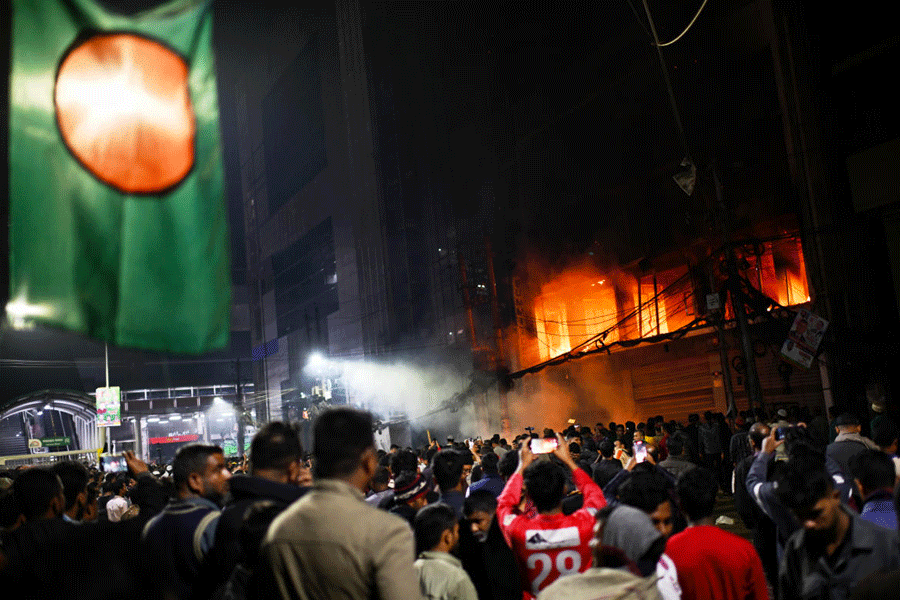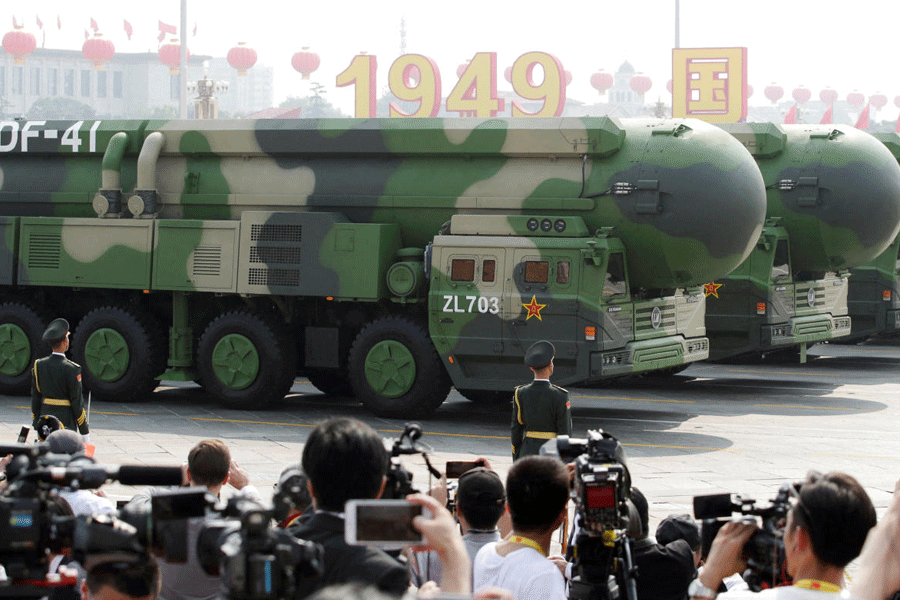Every line of Devi S. Laskar’s book The Atlas of Reds and Blues makes it evident that the book was penned by a poet. An oft-visited topic of immigrant distress in America finds an outlet in this fictional piece that has been nominated for the DSC Prize for South Asian Literature 2019. The book narrates the story of ‘Mother’, a woman born to Bengali immigrants in the US. Married to a white man, her daily struggles are a secret shared between her and her three daughters, never her husband. Mother, who believes in soaking in her distress silently, finally reaches her breaking point when there is a “prejudice-driven police raid” in her house which she vehemently protests. She is shot and left bleeding in her driveway and it is from this very moment that our story begins. Mother recounts the horrors of her life, which all culminate into a single question — “Where are you really from?”
As the date for the announcement of the shortlist draws closer, The Telegraph caught up with the author over email to understand the calamity that turned her world upside down and resulted in this poignant piece of fiction.
How does it feel to be nominated for the DSC prize?
I’m stunned. It’s such an honor to see my novel on the long-list — it has been a lovely surprise.
In your opinion, how important are literary awards for an author?
Undeniably, literary awards and most-anticipated lists get attention for books and authors. Every author wants their book to be read and is thrilled when their work receives extra attention and garners new readers. I’m aware of the sheer volume of books being published each year, and I’m so grateful that my debut novel is in such esteemed company.
Can you take us through the journey that led to The Atlas of Reds and Blues?
In 2004 I had been accepted to a writers conference in California and for my submission I wrote a 5,000-word short story about this fictional family in the Deep South. It was well received and I began to expand it and include many voices and points of view. In 2009, I set it aside to write a different novel during NaNoWriMo (national novel writing month).
In 2010, I was six weeks away from finishing that second novel when my husband was racially targeted by his former employer in Georgia. One Monday morning in May the state police raided my house and held me at gunpoint; among the things they confiscated was my computer.
I lost most of my work. Although a state judge dismissed the legal matter against my husband three years ago, in late 2016, our belongings are yet to be returned.
So I’ve had to start over. And it took a long time. I followed a friend’s advice and re-entered the creative arts in 2011 by way of establishing a photography practice. Eventually my poetry and prose returned and I sat down to rethink and reimagine the book that would become The Atlas of Reds And Blues. I rewrote the novel from 2014 to the end of 2016. It took another year to find a publisher and an additional year before its initial release in the US this February.
As a debut novelist, what were the lessons learnt on this journey?
I learned about persistence. I learned that I have a terrific writing community who supported my efforts. I learned that I’m both resilient and stubborn and these traits helped me stick with my writing during uncertain times.
What was the reason behind not providing a name to ‘Mother’?
Two reasons. First, I’m Bengali and in my family and my community we never used each other’s given names when I was growing up. We always used relational titles and I wanted to pay homage to that. Also, I’ve written about a family that is invisible and “other” in America — there was no reason to name them. No one in the world of the story would bother to learn their names or remember them.
How much of Devi as a mother is in ‘Mother’?
I gave the Mother character a few of my autobiographical moments so I could start from a place of familiarity as I explored the unknown. To paraphrase Grace Paley, I wrote Mother to learn about what I didn’t know about what I knew.
Tell us a little about your fragmentary style of writing with a mix of sizes when it comes to chapters.
A few things came together to form this style: first, I’m a poet and a former newspaper reporter so I’m in the habit of keeping things brief.
Second, when I restarted this novel in 2014 I was very determined to give the Mother character centre stage in this book. So I took out everything that didn’t directly come from Mother’s point of view.
And finally, I’ve been a part of a writing group for several years. One of my colleagues is a screenwriter and she introduced me to the structure that screenwriters use, which is based on Aristotle’s Incline. Once I saw the structure I knew that was appropriate for the Mother character and I adapted it for my book.
Mother keeps her and her daughters’ experiences a secret from her husband, who is white. Is it a gender idea or is it colour? Why protect the father from the most horrific truth of their lives?
Good question. A bit of both. I believe Mother and daughter hide their experiences from the father because he is white and will never completely understand what it’s like, and also because he is the one innocent person in the family and they don’t want to ruin his innocence and optimism.
Who are the author or poets you keep revisiting? Who inspires your writing style?
For this novel, I relied heavily on two authors and two books: Sandra Cisneros’s The House On Mango Street and Claudia Rankine’s Citizen. They inspired me to tackle urgent topics such as racism and misogyny but with my own lenses rooted in photography, poetry and journalism.
I’m always happy when I come across books that are hybrids, books that combine different genres or use new approaches. I love Bluets by Maggie Nelson, for example, and Invisible Cities by Italo Calvino. I’m inspired by Shailja Patel’s Migritude and Julio Cortazar’s Hopscotch.
What is your writing process like?
Well it depends. If I’m writing poetry, then I can write anywhere with whatever is at hand, notebook, computer, phone. But prose is a different matter. In the case of my debut novel, I found that I achieved the best results by sticking to a routine, writing in the mornings at my desk.
What can we expect next from your table?
I’ve returned to the novel that I lost in 2010, on the day of the raid. It’s a retelling of Virginia Woolf’s Mrs. Dalloway and it is called Shadow Gardens.










